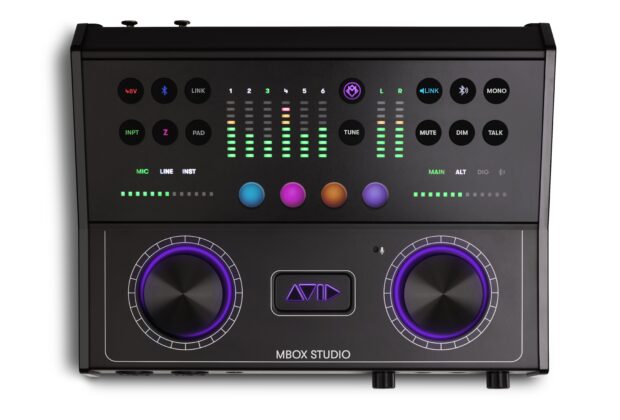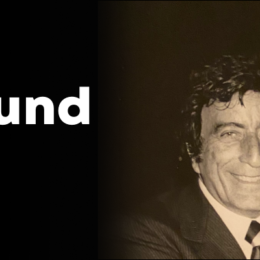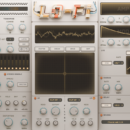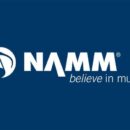Avid’s MBOX Studio is a professional grade, flexible 21 X 22 audio interface designed to be the centerpiece of your studio workflow. Featuring rugged construction and an innovative design, the Avid MBOX Studio’s large console style design is configured so that the input controls are on the left side of the interface and all the output controls on the right. MBOX Studio is relatively heavy and won’t easily slide off your desktop. With MBOX Studio, you’re getting premium quality AD/DA conversion and the same high-quality preamps found on Avid’s Carbon Pre interface which costs three times as much. All of the MBOX Studio controls and buttons are clearly and tastefully backlit and are designed to allow the interface to be effectively used in low lighting conditions. Workflow on the MBOX Studio is centered around two extra-large knobs which are to set input and output levels respectively. Selecting each of the six inputs (Two Combo jacks on the front of the unit, two on the back and two additional line inputs also on the back of MBOX Studio) is done by pressingwhe input knob which toggles though each available channel and which can be selected as mono channels or grouped into even and odd stereo pairs. Avid’s MBOX Studio supports not just Pro Tools but supports all major DAW platforms. MBOX Studio’s preamps sound clear and punchy and record extremely well.
Also, on the front of MBOX Studio is a Hi Z enabled re-amp output with ground lift and two headphone outputs with individual level controls. Input channels 5 and 6 are quarter-inch jacks. Two sets of send and return loops are provided, and double as additional line inputs for channels 7 and 8 respectively meaning you have up to eight simultaneous analog inputs on tap for tracking Drums, Live Bands, etc. A loopback channel is also available for mixing audio from your computer in with other signals for Podcasting etc. Pressing the Tune button brings up a tuner that can work with just about any instrument. The talkback microphone on the front of the unit allows you to tune your guitar or any other instrument. String names are displayed on the top of the unit. The tuner on MBOX Studiois designed to work with any acoustic instrument. The talkback mic actually doubles as an input source for the tuner.
While the MBOX Studio user interface is intuitive and easy to use, pressing the control app button on the front of MBOX Studio brings up the MBOX Control app and which displays a comprehensive array of controls and settings. Within the MBOX Control app, user configurable routing presets are available so you can call up different preconfigured routing options. There are two headphone outputs on MBOX Studio that are able to mirror the main outputs or have separate mixes. The separate mixes can have up to 8 channels sent from ProTools in addition to each of the physical inputs, Avid’s MBOX Studios has onboard DSP enabled effets that are accessible via the MBOX Control app and comprise Reverb, EQ and Delay. The onboard effects are available and configurable so that users can monitor inputs with low latency and effects on each channel.
Four user definable buttons on the front of the unit are available to control user selected functions. The back of MBox Studio has two user configurable footswitch jacks for hooking up momentary or expression pedals, Wah Pedals etc. The available EQ settings in the MBOX Control app Channel focus mode can be routed back to ProTools. Other niceties on Avid’s MBox studio include a full monitor section including switchable main and alt outputs asnd which has the ability to normalize the levels for both the main and alt outputs as well as the SPDIF output. separate Bluetooth inputs and outputs to connect wireless earbuds, Bluetooth speakers or connecting phone/tablet for external sources
So, is the MBOX Studio a standout from the already crowded field of audio interfaces currently on the market? From my perspective and for me as guitar player, AVID’s MBox studio has some significant features that I have not seen on any other audio interface.
Unlike any other audio interface currently available, Avid’s MBOX Studio can set impedance levels on virtually all the available I/O, meaning not only on the four combo jacks switchable between mic, line, and instrument but also the effects loops, footswitch inputs and re-amp output. Further, each of the available impedance settings have “plus capacitor” options adds significant tube feel to your guitar tracks.
Variable Hi Z impedance switching is also great for re-amping and for use on both effects loops, and also as an output to your guitar amps preamp input. While this might at face value does not seem like that big of a big deal, if you’re a guitar player and are used to using a DI and plugging effect pedals into your signal chain, MBOX Studio’s variable impedance capability will immediately make sonic sense. When correctly configured, Amp Sims inserted into your signal path in ProTools will sound better than a typical Jfet enabled input. The available two mono or one stereo effect Loops variable impedance and switchable High Z capability and the ability to output to your amp via the re-amp output combine to give you a highly flexible path which you can fine tune to your specific musical style.
You can also use the two quarter inch footswitch inputs on the back of MBox Studio to connect volume or expression pedal combined for example with a delay pedal and then play through different guitars and experiment with high and low output of your guitar’s pickups. Using ProTools and MBOX Studio’s variable impedance capability you can also do things like double a melody line, record a DI Track amp and amp modeler track recording and then playback and re-amp your tracks. MBox Studio’s comprehensive impedance switching capability makes it easy to experiment with different guitar pick-ups and craft some great and hpyer realistic sounding guitar tracks on both electric and acoustic guitar. In short, from a Guitar plyers perspective,no other audio interface currently on the market that I know of has this much flexibility.
With the purchase of MBOX Studio, you get a comprehensive selection of plug in,loops and more. You also get a one yearPro Tools Artist Subscription. That’s a $299 value included with the hardware, all of which makes purchasing a MBOX Studio a killer deal. After the first year, customers are free to change to any Pro Tools Subscription or Perpetual license
Bottom line, If you’re a guitar player and are in the market for an audio interface, Avid’s MBOX Studio’s built in effects, comprehensive re-amping functionality, variable impedance enabled inputs , and flexible routing not to mention end to end pro level specifcations make it a solid choice and well worth checking out.
AVID MBOX Studio is available now for MAP $899. Find out more at avid.com/products/mbox-studio













